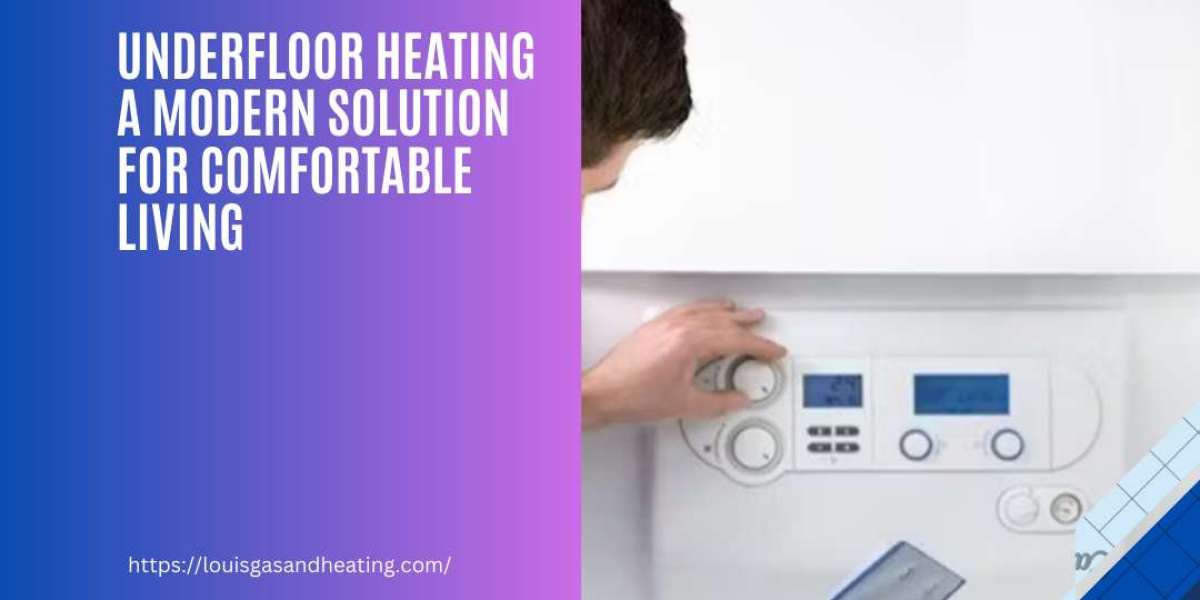Introduction to Underfloor Heating
Underfloor heating, also known as radiant floor heating, works by emitting heat from either electrical cables or water-filled pipes installed beneath the floor surface. This method ensures an even distribution of warmth, eliminating cold spots and providing consistent comfort.
Types of Underfloor Heating Systems
Electric Underfloor Heating
Electric underfloor heating systems consist of heating cables or mats installed beneath the floor covering. These systems are ideal for smaller areas and are relatively easy to install.
Hydronic Underfloor Heating
Hydronic underfloor heating systems utilize water-filled pipes to circulate hot water beneath the floor. While installation can be more complex, hydronic systems are energy-efficient and suitable for larger spaces.
Benefits of Underfloor Heating
Underfloor heating offers numerous advantages over traditional heating methods:
Energy Efficiency
By heating from the floor up, underfloor heating systems require lower temperatures to achieve the same level of comfort, resulting in energy savings and reduced heating bills.
Comfort and Even Heat Distribution
Underfloor heating eliminates the need for bulky radiators and provides consistent warmth throughout the room, ensuring unparalleled comfort for occupants.
Space-saving and Aesthetic Appeal
Since underfloor heating is installed beneath the floor, it frees up wall space and allows for greater flexibility in room design and furniture placement, enhancing the overall aesthetics of the space.
Installation Process of Underfloor Heating
The installation process varies depending on the type of underfloor heating system chosen:
Electric Underfloor Heating Installation
Electric underfloor heating can be installed directly beneath various types of floor coverings, such as tiles, laminate, or engineered wood. The heating cables or mats are laid out evenly across the floor surface and connected to a thermostat for control.
Hydronic Underfloor Heating Installation
Hydronic underfloor heating requires the installation of water-filled pipes within the floor structure. These pipes are connected to a boiler or heat pump, which circulates hot water to provide warmth. Proper insulation and floor preparation are crucial for optimal performance.
Factors to Consider Before Installing Underfloor Heating
Before installing underfloor heating, several factors should be taken into account:
Flooring Types
Different flooring materials conduct heat differently, with some being more suitable for underfloor heating than others. Consultation with a professional installer can help determine the best flooring option for your underfloor heating system.
Room Size and Layout
The size and layout of the room will impact the heating requirements and the placement of heating elements. Larger rooms may require additional heating zones for optimal comfort and energy efficiency.
Insulation and Heat Loss
Proper insulation beneath the floor is essential to prevent heat loss and maximize the efficiency of the underfloor heating system. Addressing any existing insulation issues can significantly improve performance and reduce energy consumption.
Cost of Underfloor Heating Installation
The cost of installing underfloor heating varies depending on factors such as the type of system, the size of the area, and the complexity of the installation. While initial costs may be higher than traditional heating methods, the long-term energy savings and comfort benefits outweigh the investment.
Maintenance and Care Tips for Underfloor Heating Systems
Underfloor heating systems require minimal maintenance, but regular inspection and upkeep are recommended to ensure optimal performance. Simple tasks such as cleaning the floor surface and checking for any signs of damage or leaks can help prolong the lifespan of the system.
Common Issues and Troubleshooting
Despite their reliability, underfloor heating systems may encounter occasional issues such as uneven heating or thermostat malfunctions. Troubleshooting techniques and professional assistance can resolve these issues promptly and prevent further damage.
Comparison with Traditional Heating Systems
Compared to traditional heating systems like radiators or forced-air HVAC systems, underfloor heating offers superior comfort, energy efficiency, and design flexibility. The even distribution of heat and absence of visible heating elements contribute to a more comfortable and visually appealing living space.
Environmental Impact of Underfloor Heating
Underfloor heating systems are environmentally friendly options for heating homes, especially when paired with renewable energy sources such as solar or geothermal power. Their energy-efficient operation reduces carbon emissions and helps combat climate change.
Underfloor Heating for Different Rooms
Underfloor heating is suitable for various rooms in the home, including bathrooms, kitchens, living rooms, and bedrooms. Its versatility and ability to provide localized heating make it an ideal choice for enhancing comfort in specific areas.
Safety Considerations and Regulations
While underfloor heating systems are generally safe, proper installation and adherence to safety regulations are essential to prevent hazards such as electrical shocks or overheating. Hiring a qualified installer and following manufacturer guidelines can ensure a safe and reliable system.
Popular Brands and Manufacturers
Several reputable brands and manufacturers specialize in underfloor heating systems, offering a wide range of products to suit different needs and budgets. Researching and comparing options can help homeowners make informed decisions when selecting a system for their home.
Conclusion
Underfloor heating offers a modern and efficient solution for heating homes, providing unparalleled comfort, energy efficiency, and design flexibility. By understanding the benefits, installation process, and maintenance requirements of underfloor heating systems, homeowners can create cosy and inviting living spaces while reducing their carbon footprint and energy costs.
FAQs (Frequently Asked Questions)
Is underfloor heating suitable for all types of flooring?
Underfloor heating is compatible with most types of flooring, including tiles, laminate, wood, and carpet. However, it's essential to consult with a professional to ensure compatibility and proper installation.
How long does it take to install underfloor heating?
The installation time depends on various factors such as the size of the area, the type of system chosen, and the complexity of the installation. On average, installation can take anywhere from a few days to a week.
Are underfloor heating systems expensive to operate?
Underfloor heating systems are generally more energy-efficient than traditional heating methods, resulting in lower operating costs over time. However, actual costs may vary depending on factors such as energy prices and insulation levels.
Can underfloor heating be installed in existing homes?
Yes, underfloor heating can be retrofitted into existing homes, although the installation process may be more complex compared to new construction. Proper planning and preparation are essential to ensure a successful installation.
Is underfloor heating suitable for all climates?
Underfloor heating can be used in various climates, but its effectiveness may vary depending on factors such as insulation levels, outdoor temperatures, and humidity levels. Consulting with a professional can help determine the suitability of underfloor heating for your specific climate.







